I was facing the exact same problem! With a few searches I could get and modify the following VBA code that will enable a function named =Similarity(). This function will output a number that goes from 0 to 1, according to the similarity of the two input cells.
I ordered alphabetically my column info and applied the formula. Then I created a Conditional Formatting Rule to highlight the ones with a high similarity rate (i.e.: at least 65%). Then I searched for each highlighted occurrence and fixed my records manually.
Obs.: The similarity indicator goes from 0 to 1 (0% to 100%)

To use it, you must:
- Open VBE (Alt+F11)
- Insert Module
- Paste the following code into the Module Window

Code:
Public Function Similarity(ByVal String1 As String, _
ByVal String2 As String, _
Optional ByRef RetMatch As String, _
Optional min_match = 1) As Single
Dim b1() As Byte, b2() As Byte
Dim lngLen1 As Long, lngLen2 As Long
Dim lngResult As Long
If UCase(String1) = UCase(String2) Then
Similarity = 1
Else:
lngLen1 = Len(String1)
lngLen2 = Len(String2)
If (lngLen1 = 0) Or (lngLen2 = 0) Then
Similarity = 0
Else:
b1() = StrConv(UCase(String1), vbFromUnicode)
b2() = StrConv(UCase(String2), vbFromUnicode)
lngResult = Similarity_sub(0, lngLen1 - 1, _
0, lngLen2 - 1, _
b1, b2, _
String1, _
RetMatch, _
min_match)
Erase b1
Erase b2
If lngLen1 >= lngLen2 Then
Similarity = lngResult / lngLen1
Else
Similarity = lngResult / lngLen2
End If
End If
End If
End Function
Private Function Similarity_sub(ByVal start1 As Long, ByVal end1 As Long, _
ByVal start2 As Long, ByVal end2 As Long, _
ByRef b1() As Byte, ByRef b2() As Byte, _
ByVal FirstString As String, _
ByRef RetMatch As String, _
ByVal min_match As Long, _
Optional recur_level As Integer = 0) As Long
'* CALLED BY: Similarity *(RECURSIVE)
Dim lngCurr1 As Long, lngCurr2 As Long
Dim lngMatchAt1 As Long, lngMatchAt2 As Long
Dim I As Long
Dim lngLongestMatch As Long, lngLocalLongestMatch As Long
Dim strRetMatch1 As String, strRetMatch2 As String
If (start1 > end1) Or (start1 < 0) Or (end1 - start1 + 1 < min_match) _
Or (start2 > end2) Or (start2 < 0) Or (end2 - start2 + 1 < min_match) Then
Exit Function '(exit if start/end is out of string, or length is too short)
End If
For lngCurr1 = start1 To end1
For lngCurr2 = start2 To end2
I = 0
Do Until b1(lngCurr1 + I) <> b2(lngCurr2 + I)
I = I + 1
If I > lngLongestMatch Then
lngMatchAt1 = lngCurr1
lngMatchAt2 = lngCurr2
lngLongestMatch = I
End If
If (lngCurr1 + I) > end1 Or (lngCurr2 + I) > end2 Then Exit Do
Loop
Next lngCurr2
Next lngCurr1
If lngLongestMatch < min_match Then Exit Function
lngLocalLongestMatch = lngLongestMatch
RetMatch = ""
lngLongestMatch = lngLongestMatch _
+ Similarity_sub(start1, lngMatchAt1 - 1, _
start2, lngMatchAt2 - 1, _
b1, b2, _
FirstString, _
strRetMatch1, _
min_match, _
recur_level + 1)
If strRetMatch1 <> "" Then
RetMatch = RetMatch & strRetMatch1 & "*"
Else
RetMatch = RetMatch & IIf(recur_level = 0 _
And lngLocalLongestMatch > 0 _
And (lngMatchAt1 > 1 Or lngMatchAt2 > 1) _
, "*", "")
End If
RetMatch = RetMatch & Mid$(FirstString, lngMatchAt1 + 1, lngLocalLongestMatch)
lngLongestMatch = lngLongestMatch _
+ Similarity_sub(lngMatchAt1 + lngLocalLongestMatch, end1, _
lngMatchAt2 + lngLocalLongestMatch, end2, _
b1, b2, _
FirstString, _
strRetMatch2, _
min_match, _
recur_level + 1)
If strRetMatch2 <> "" Then
RetMatch = RetMatch & "*" & strRetMatch2
Else
RetMatch = RetMatch & IIf(recur_level = 0 _
And lngLocalLongestMatch > 0 _
And ((lngMatchAt1 + lngLocalLongestMatch < end1) _
Or (lngMatchAt2 + lngLocalLongestMatch < end2)) _
, "*", "")
End If
Similarity_sub = lngLongestMatch
End Function
- Output according to your data set:



